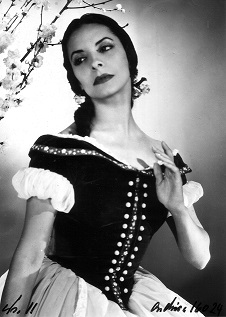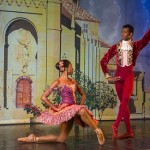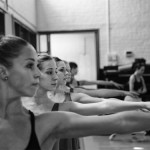Lessons from a Ballerina Legend: Alicia Alonso had vision, even though she couldn’t see
We can joke about being able to do something with our eyes closed, but that’s exactly what Alicia Alonso learnt to do, what she had to do to succeed.
Diagnosed with a detached retina at the age of 19 – which was just the beginning of her vision problems that were to worsen throughout her life – she was ordered to lay completely still, resting on her back for many months to recover from eye surgery.
She was quoted as saying: “I danced in my mind. Blinded, motionless, flat on my back, I taught myself to dance Giselle.”
Giselle was to become her most famous role.
Here are some insights into the life of this remarkable living legend and the lessons we can take from her story.
Identify with your goal, not your obstacles
Despite being partially and permanently blind with no peripheral vision, this Cuban-born prima ballerina was known for technical ability advanced for her time, for intense emotional artistry and for her simply staggering longevity.
She danced her final performance in 1995 in a piece she choreographed called “The Butterfly”.
She was 75 at the time.
It would seem that she never allowed her disability to define her, in fact, she hardly spoke on the topic, and her audiences never suspected her blindness for a moment.
Find strategies to your setbacks
Ms Alonso developed techniques and strategies to allow for a seamless performance:
- Her partners always had to be exactly where she expected them to be at all times;
- Bright lights were strategically placed so that she could recognise the white glow of centre stage as well as her proximity to the orchestra pit;
- And in addition, a thin wire was occasionally stretched across the edge of the stage as a final precaution.
In this video, a clip from a documentary on the greatest Giselle performers in history, see if you can spot how she deliberately slowed certain moves and took a moment longer to orient and prepare herself…
Alicia Alonso’s story reminds me of a talk I recently attended by Dr John Demartini – author, human behavioural specialist and shiny can-opener to human minds – where he spoke about the common traits and success principles of the world’s highest achievers.
Nothing more important in life than knowing and doing what you love most
The first foundational trait common to every inspired high achiever, as shared by Dr Demartini, is that they know precisely what they are here to do – they have identified their highest value, the thing that is most important to them, thereby giving them their inspired purpose in life.
No-one could doubt that Ms Alonso had ‘dance’ at the very top of her priorities when, after her devastating realisation that her eyesight hadn’t improved after multiple surgeries and long dark months of recovery, she got back up on pointe and danced straight into the hearts and memories of audiences around the world.
Who could’ve guessed she had the slightest disability when she could perform multiple pirouettes and fierce fouettés like these…
She once said “Dance to me is life itself”, but more than mere words, her whole life demonstrates her inspired and determined belief and she has made history as a result.
“When the voice and the vision on the inside become more profound and clear and loud than the opinions on the outside, you’ve mastered your life.” – Dr John Demartini
It’s not always easy, but it’s not hard either when you’re living your dream
Another trait of highly successful top achievers is that those with an inspired vision will endure both pleasure and pain equally to achieve it. “Everything is on the way, not in the way”, says Demartini.
Watch this short video clip of Ms Alonso remembering her first performance of Giselle and see if you can spot this balance of pleasure and pain at play…
Never lose sight of your inner vision
Even though her impaired physical vision meant that Ms Alonso would complete her pirouettes and posé towards a pas de deux partner she couldn’t see, her strength of will and focussed determination trumped any fear of missing the mark. To anyone else, that would require tremendous courage, but I have a feeling that if asked, she would simply wave it off as a minor nothing.
In fact, the only vision deficiency Madame Alonso seems to allow is that she simply doesn’t see her obstacles. Nothing is in her way, everything is on the way to her own success.
When old age threatened her dance career, she simply took no notice. In an interview for the New York Times she said:
“If a person keeps thinking, ‘How old am I going to be?’ and thinking about the age, that’s the worst thing you can do. You don’t have to think about how old you are. You have to think about how many things you want to do and how to do it and keep on doing it.”
Never allowing the voices on the outside to become louder than her own, at the age of 91, she is still actively involved today as the director of the National Ballet of Cuba, the ballet company she started back in 1948.
Thanks to her, ballet has become a proud art form in Cuba, continuing to create future generations of inspired virtuoso dancers, with Alicia Alonso now becoming that very same guiding light that she once depended on to find her way across the stage.
International Ballet Gala in Johannesburg pays homage to Alicia Alonso
Six of Madame Alonso’s principal dancers from the National Ballet of Cuba will be joined by leading dancers from other major ballet companies in Johannesburg on 28, 29 and 30 June 2013 for five ballet galas in honour of this legendary lady.
The International Ballet Gala is being presented by South African ballet entrepreneur Dirk Badenhorst, an admirer of Madame Alonso ever since he began his close association with Cuban ballet in 2008.
“Through her strength as well as her stature as a Cuban national treasure,” says Dirk Badenhorst, “Alicia Alonso set an example for the world on the way in which ballet can be part of nation building, embracing an entire national population and cutting across all racial, social and economic divisions.”
The ballet galas are taking place at the Teatro at Montecasino and more information and booking details can be found here.
And finally, if you are still in any doubt of the inspired legacy Madame Alonso is creating, just watch her National Ballet of Cuba in this jaw-dropping compilation from their production of Don Quixote in Paris.
Category: Performance










